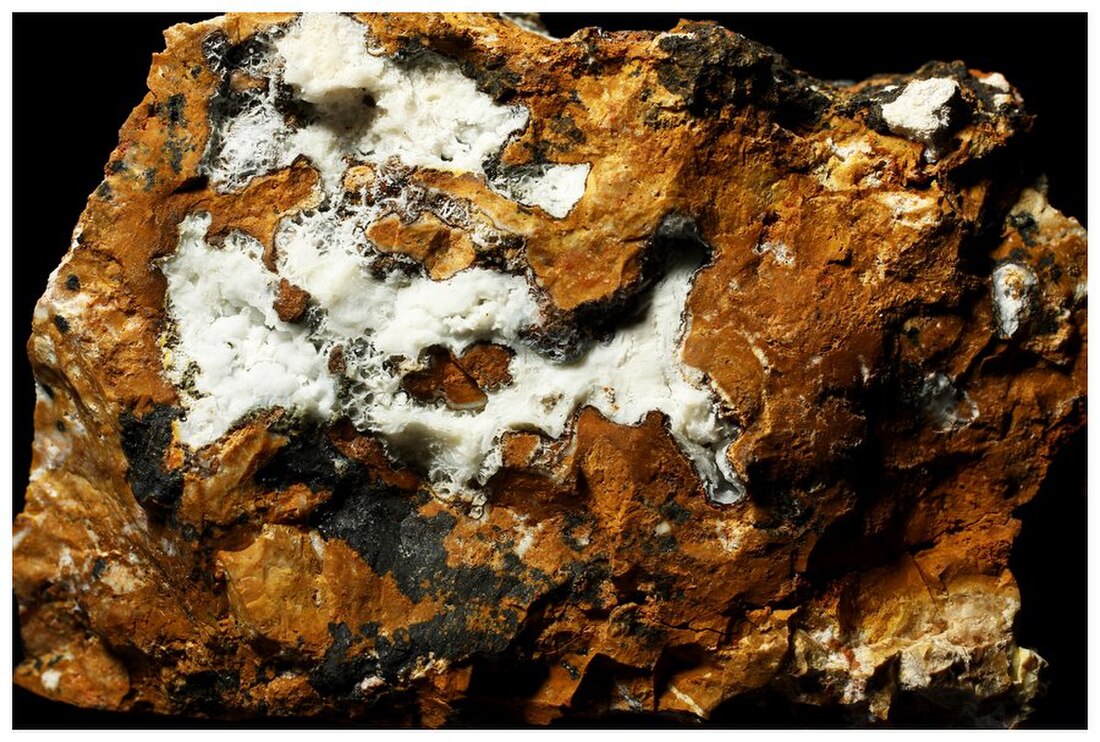Sauconite
Trioctahedral (Zn2+) smectite, phyllosilicate mineral From Wikipedia, the free encyclopedia
Sauconite is a complex phyllosilicate mineral of the smectite clay group, formula Na0.3Zn3(SiAl)4O10(OH)2·4H2O. It forms soft earthy bluish white to red-brown monoclinic crystals typically massive to micaceous in habit. It has a Mohs hardness of 1 to 2 and a specific gravity of 2.45. Optically it is biaxial positive with refractive index values of nα = 1.550 – 1.580, nβ = 1.590 – 1.620 and nγ = 1.590 – 1.620.[2][4] It is found in vugs and seams in the oxidized zones of zinc and copper deposits. It occurs in association with hemimorphite, smithsonite, chrysocolla, coronadite and various iron oxides.
| Sauconite | |
|---|---|
 Sauconite (reddish brown) | |
| General | |
| Category | Phyllosilicate mineral |
| Formula | Na0.3Zn3(SiAl)4O10(OH)2·4H2O |
| IMA symbol | Sau[1] |
| Strunz classification | 9.EC.45 |
| Crystal system | Monoclinic |
| Crystal class | Prismatic (2/m) (same H-M symbol) |
| Space group | C2/m |
| Identification | |
| Color | Reddish brown, brown, brownish yellow, mottled |
| Crystal habit | Clayey; as small micaceous plates in laminated to compact masses |
| Cleavage | Perfect on {001} |
| Mohs scale hardness | 1–2 |
| Luster | dull |
| Diaphaneity | Translucent |
| Specific gravity | 2.45 |
| Optical properties | Biaxial (−) |
| Refractive index | nα = 1.550 – 1.580 nβ = 1.590 – 1.620 nγ = 1.590 – 1.620 |
| Birefringence | δ = 0.040 |
| Dispersion | r > v strong |
| References | [2][3][4] |
It was named for the Saucon Valley in the Lehigh Valley region of eastern Pennsylvania, where it was originally discovered in 1875.[3]
References
Wikiwand - on
Seamless Wikipedia browsing. On steroids.
